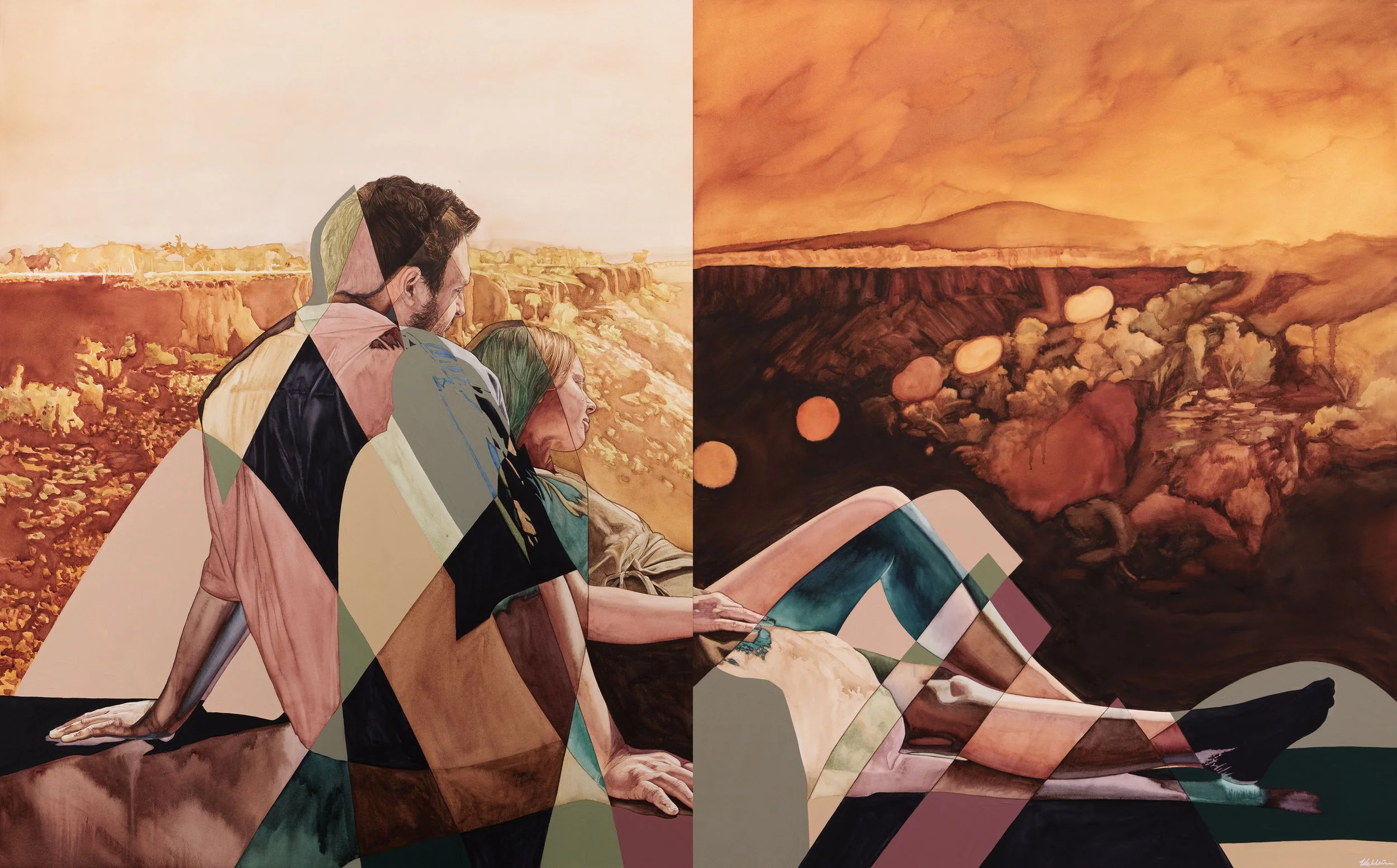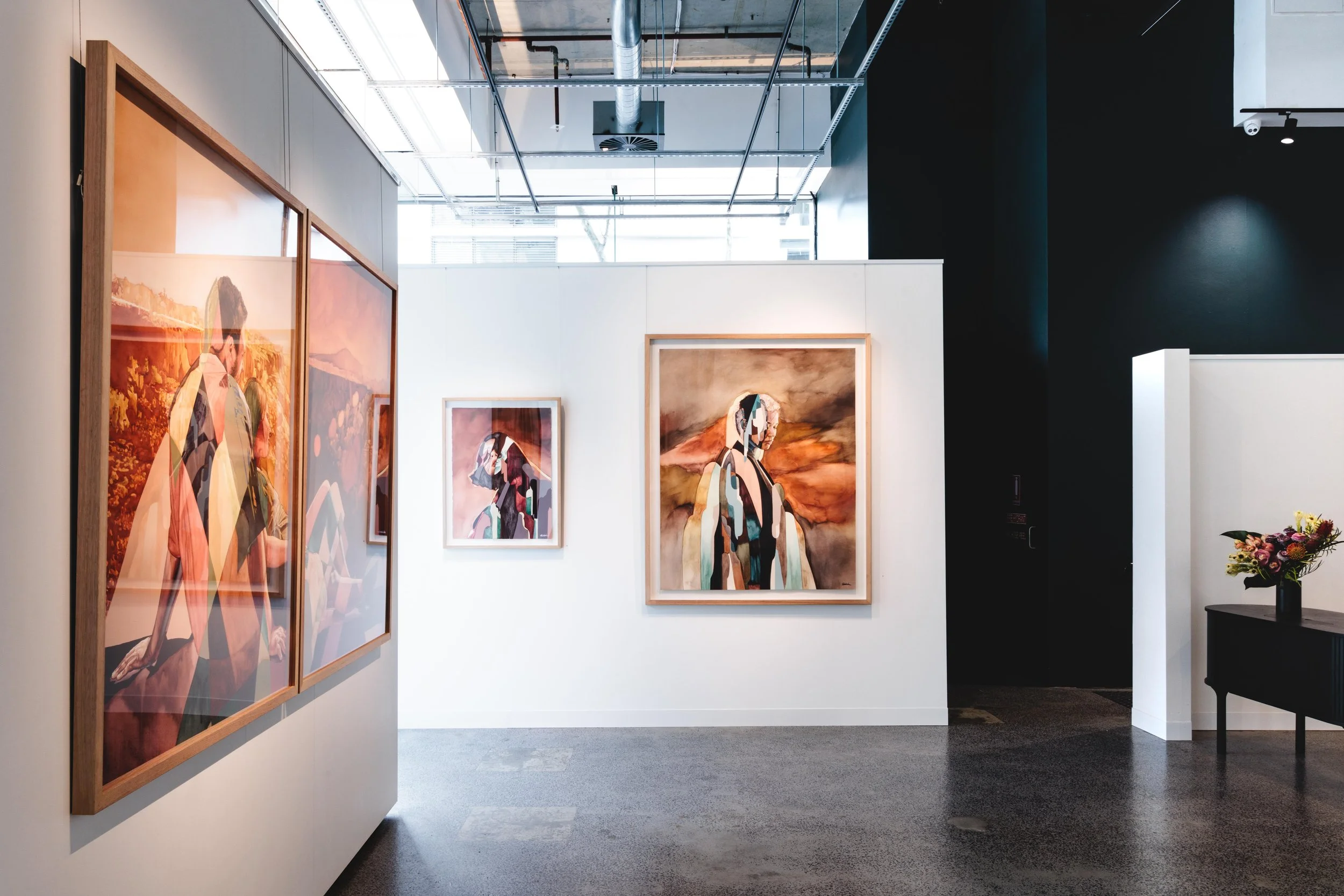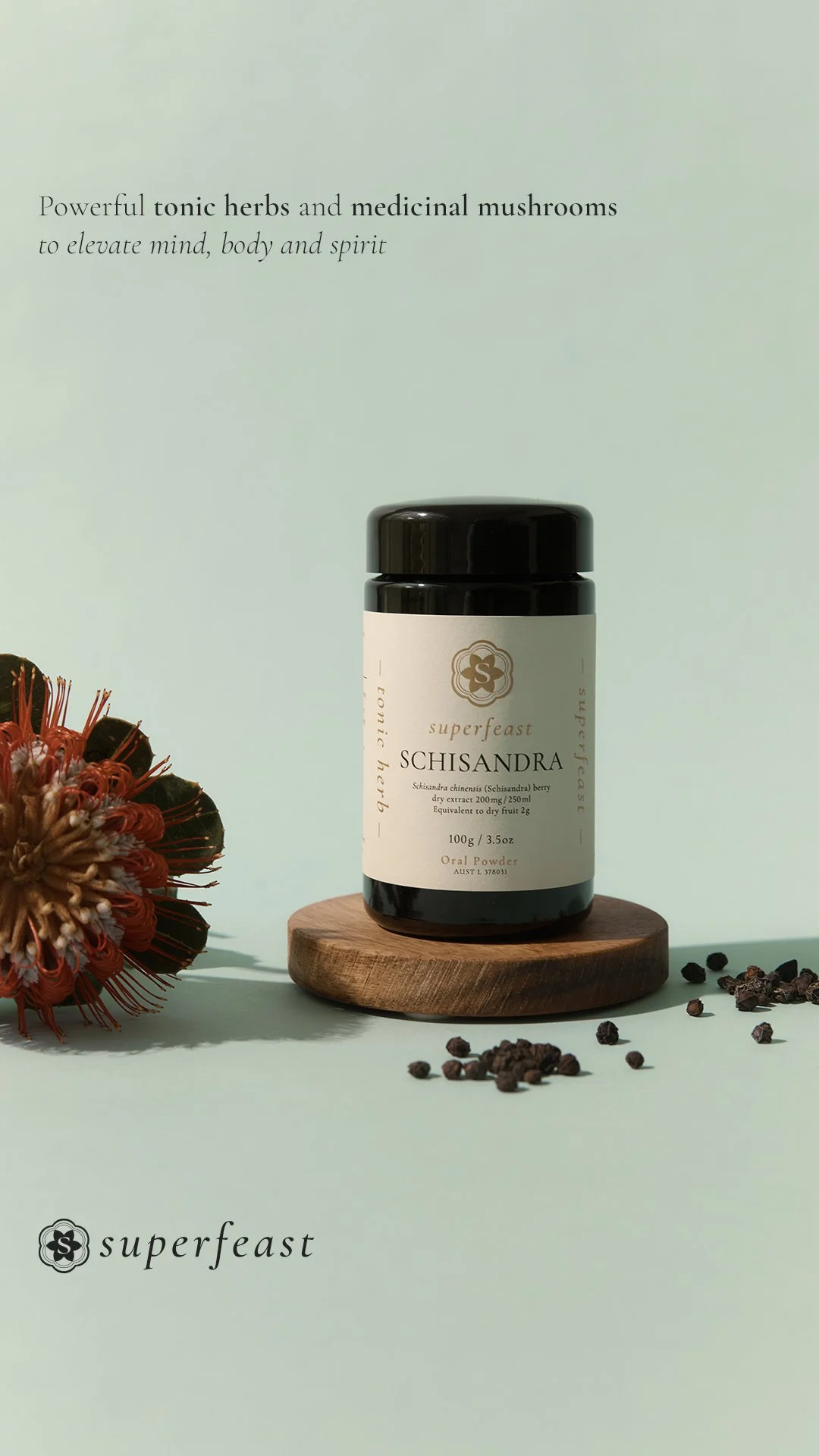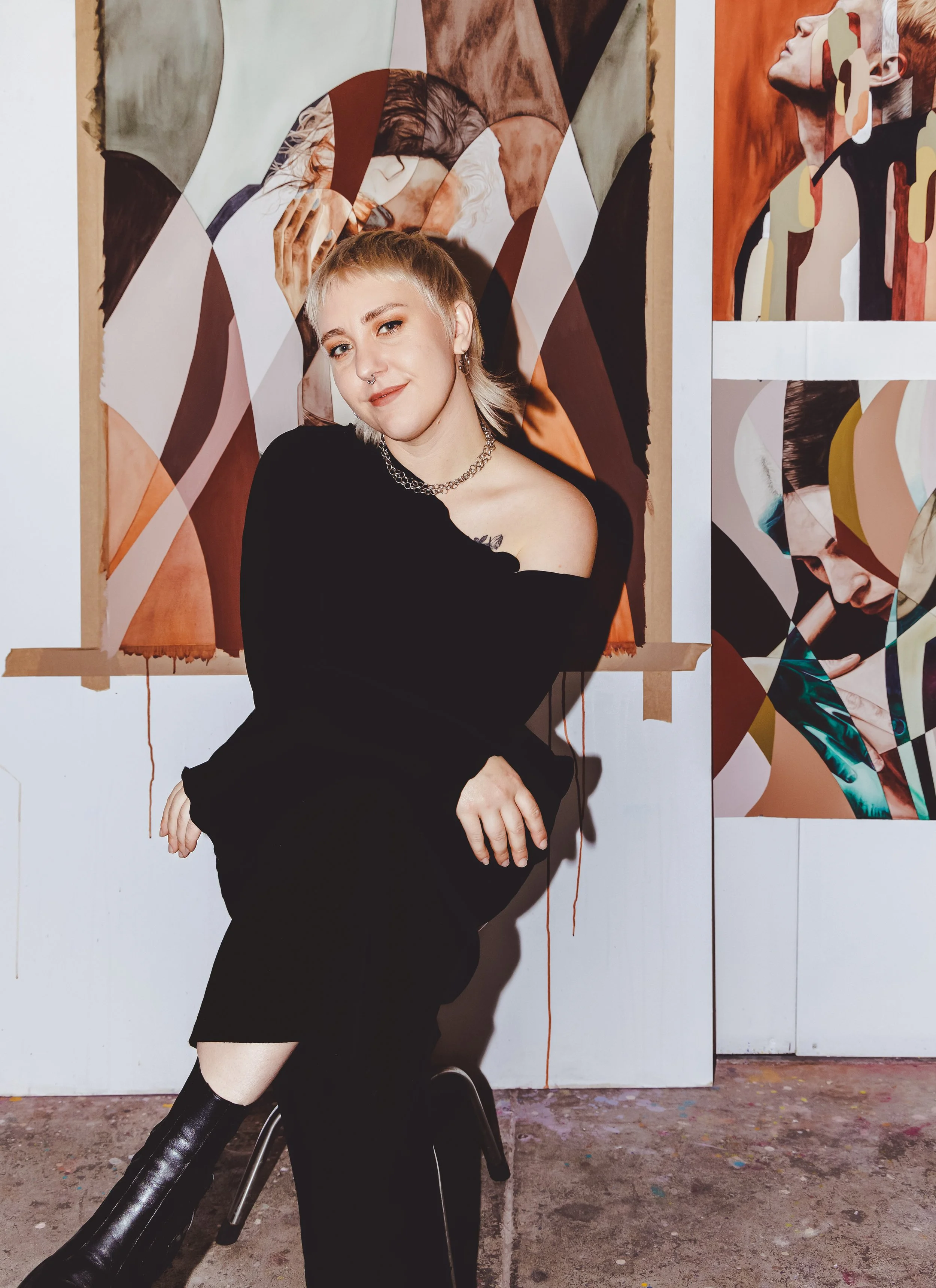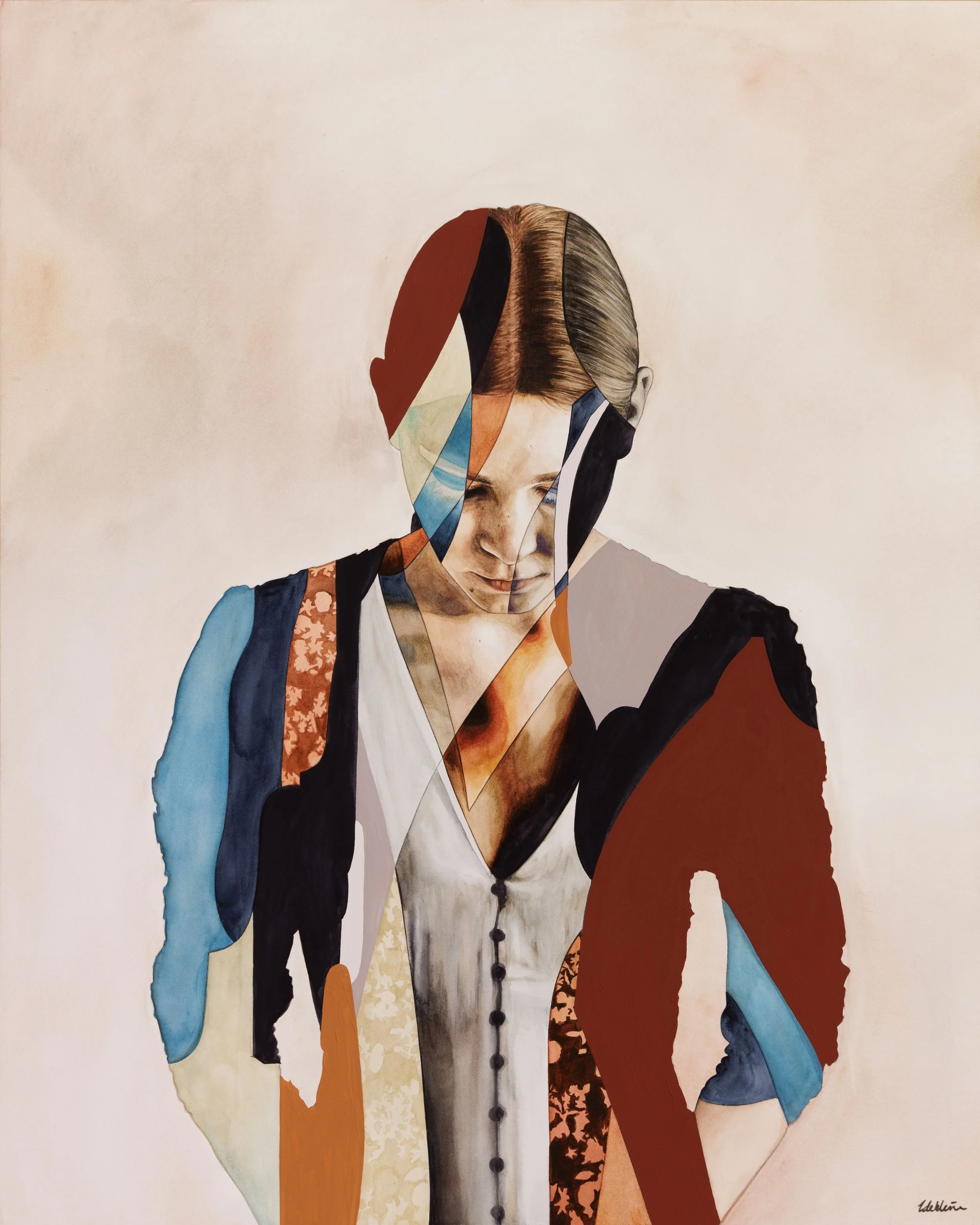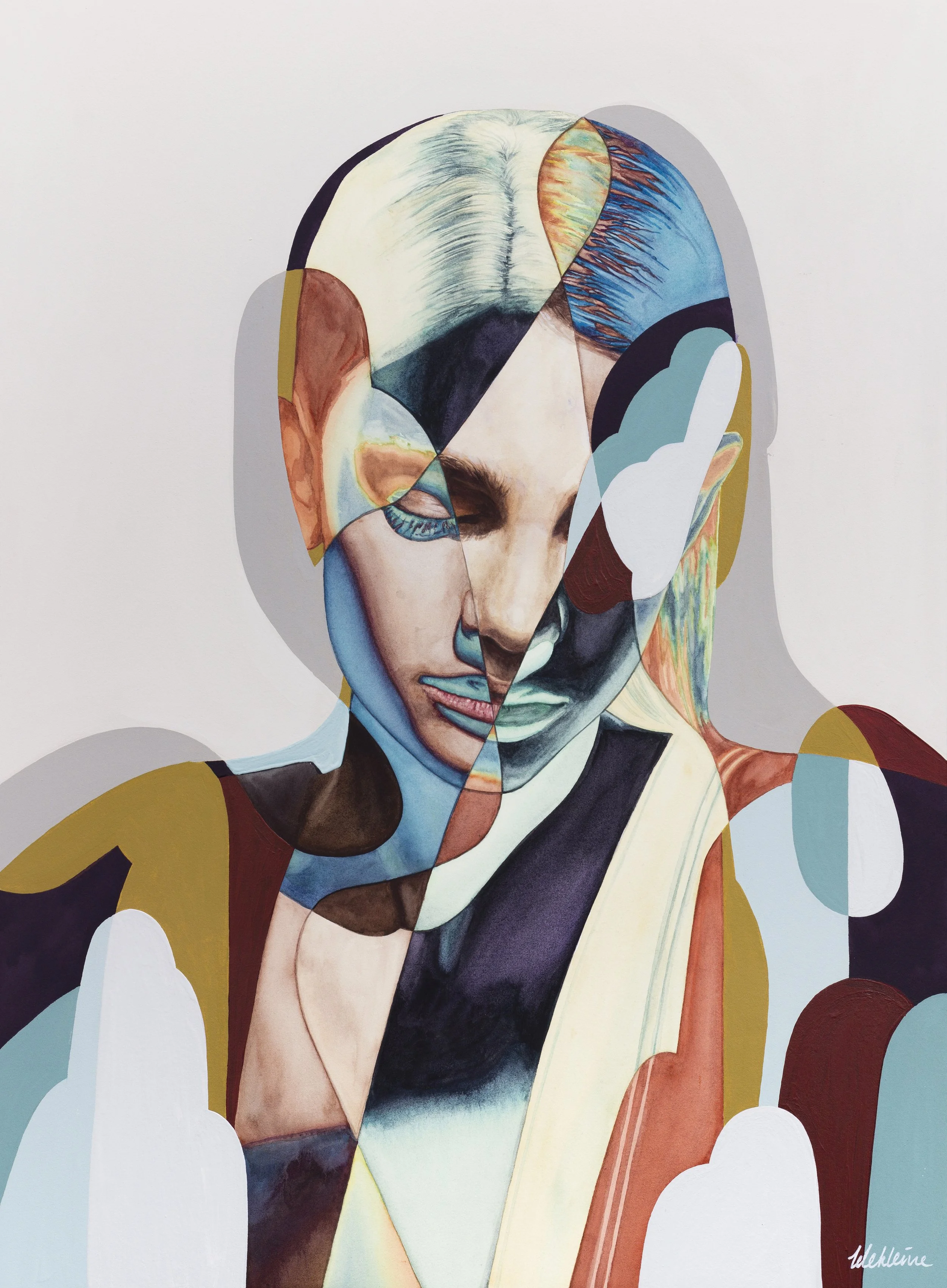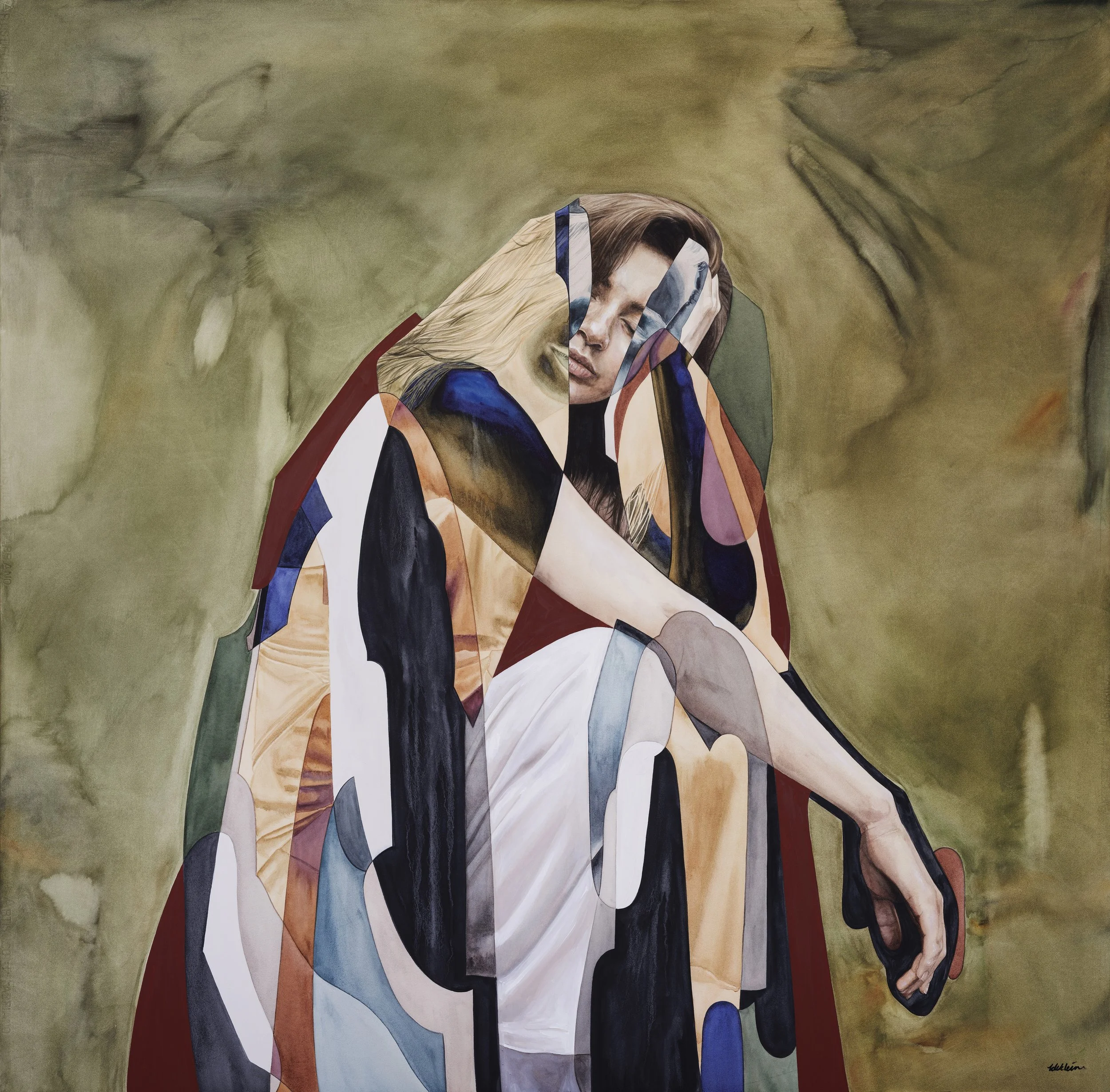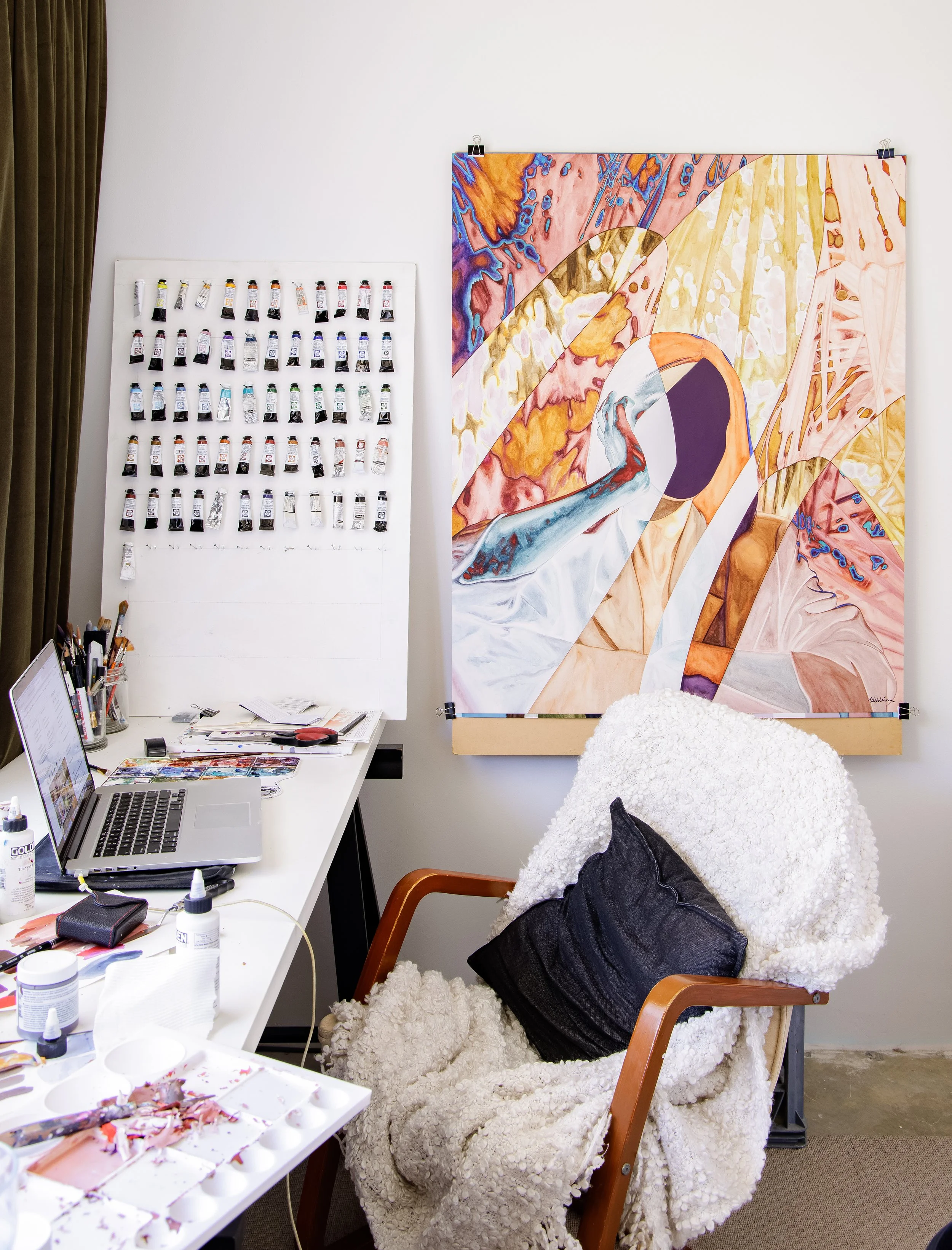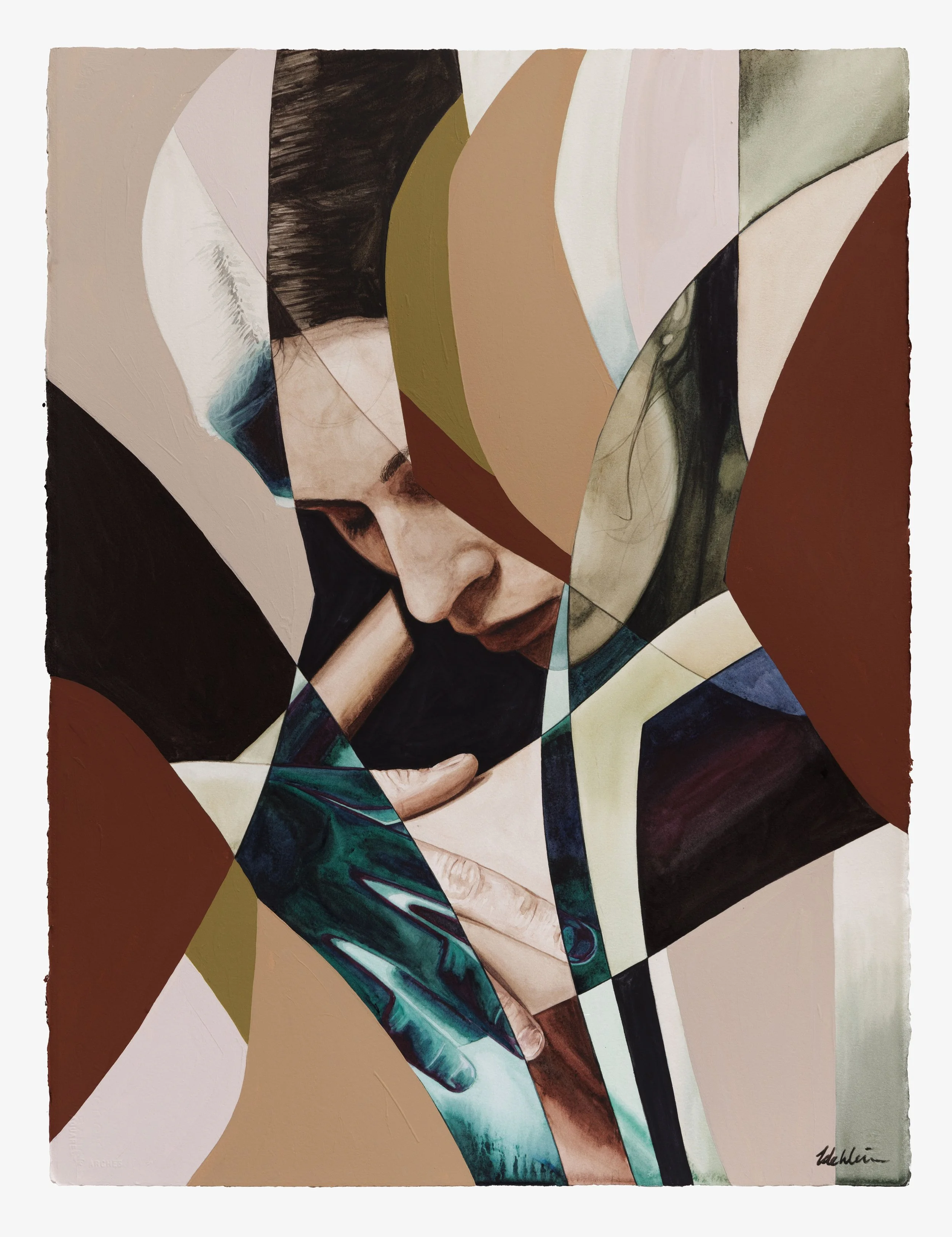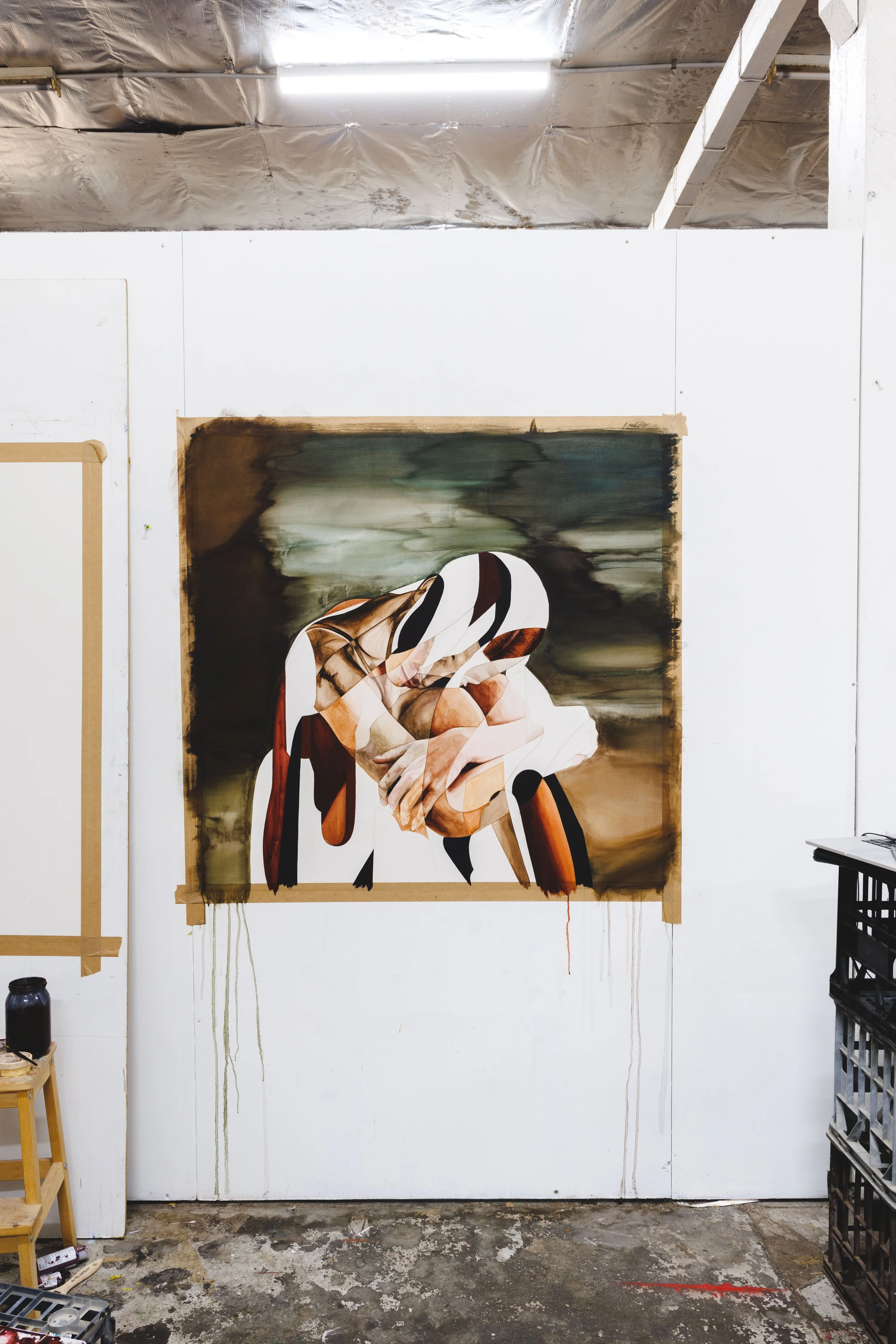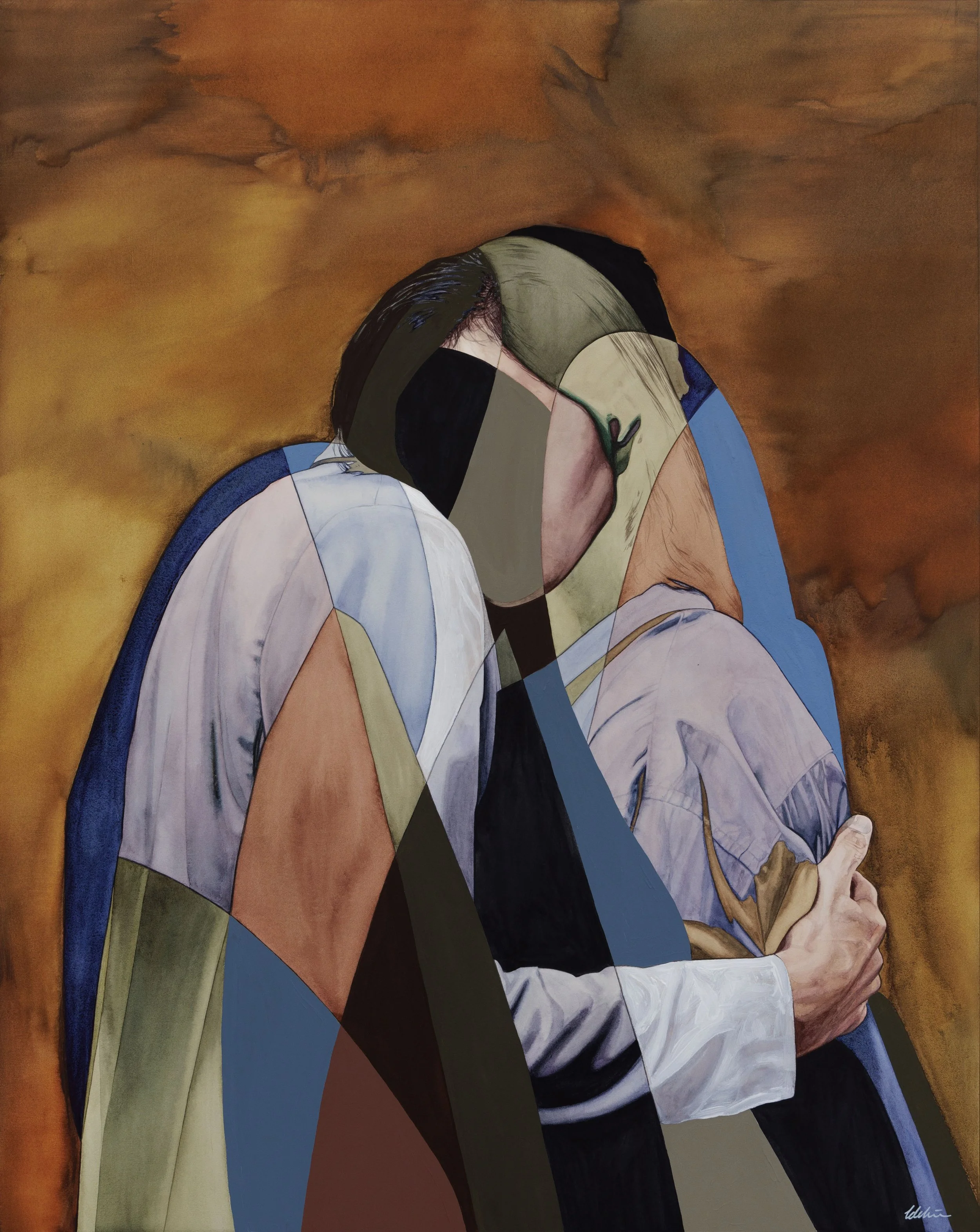Isabelle de Kleine’s Paintings Blur the Line Between Realism & Abstraction
Western Australia-based artist Isabelle de Kleine shares the importance of embracing vulnerability, the process behind her artwork and her proudest career moment so far.
Words: Hande Renshaw I Photography: Courtesy of Isabelle de Kleine
Hello Isabelle–I’d love to start by asking you whether creating has always been a big part of your life?
Isabelle: Ever since I was a child I’ve been drawn to art making. My parents tell me how even in kindergarten I was drawing figures whilst every one else was drawing stick figures. I was obsessed with attempting to understand how to represent people and objects in art. This kept amplifying through my schooling years, to the point where I would spend lunch times in the art room and would study any creative unit that I could. I taught myself a range of different skills: from website design to video editing, photography to textiles, but for me the hero was always painting.
I was encouraged to enter prizes from a young age, from small regional and local awards, to being awarded highly commended youth award at the Lester Prize (formally the Black Swan Prize for Portraiture) and exhibiting at the Perspectives at the Art Gallery of Western Australia.
After high school, I was accepted into RMIT and made the transition to Melbourne, which was incredibly formative for both my own identity and my art. RMIT pushed me to think more critically about what I created and why I was creating it and how I could communicate my ideas more effectively. The first year was hard - a bit of an art boot camp - it taught me to rethink my work, unlearn a few habits and challenge my methods of art making.
Through my degree I started to piece together the puzzle of what it was that I wanted to communicate. Even to this day, my work stems from a place of unknowing. An exploration into those feelings you can’t communicate, an attempt to understand and visually communicate life, self and the metaphysical.
Throughout, I continued exhibiting as much as possible. From small exhibitions and prizes, to loaning works to cafes and bars, and even live painting at a festival. In 2015, during my final year at university, I was fortunate enough to be a joint winner of the Digital Portrait Award at the National Portrait Gallery as well as receiving the Tolarno Hotel painting prize at the graduate showcase. The following year I was awarded The Arkley Prize at the Not Fair Art Fair. These early successes gave hope that I potentially had found the makings of a career and further instilled an irrepressible drive to continue creating.
What does a ‘normal’ day look like for you?
I’ve come to the realisation that I’m a creature of habit. As someone who is self employed, I need to be the one to create my own structure in life. It’s easy to over or under work, so I try to treat my studio as a 9-5 kind of job, although in full honesty most of this year I worked 6 days a week as there has been such a large amount of work involved in creating for my second solo exhibition.
A typical day in my life involves a slow morning with coffee before heading to my Fremantle warehouse studio. Here I will ease my way into the day by doing some admin work on the computer; whether that’s emailing, setting out my day, planning future artworks, or updating social media or my website. I find thinking around my practice helps to focus my brain and allow me to ready myself to spend the rest of the day painting.
The creation of good head space is the most important tool to get me into the mood to paint. I find that listening to atmospheric or repetitive music helps me enter a more meditative state where I can zone out and fall into the work I’m creating. When I am able to relax and disconnect I can paint for hours uninterrupted.
Where do you generally draw inspiration from?
I always find this one so hard to answer! I feel like there’s such a plethora of places and people that I draw inspiration from, and this is constantly evolving. I think it’s reflected in my work, the collage-like nature of the shapes are intended to be representative of the huge cache of thoughts, ideas and inspirations that are running through my head.
Right now, I feel deeply inspired by the landscape around me, in particular the arid landscapes found in the Pilbara, Kimberley and Wheatbelt regions of Western Australia. It’s a little contradictory as I don’t really represent the landscape visually in my work, rather I’m more inspired by attempting to reflect the way it makes me feel as well as the colour and form. I feel very drawn to the sense of escapism that I can find in spending time somewhere remote.
Currently I’m loving the works of Emma Currie, Ben Crawford, Atong Atem and Louise Tate. I think they all have an incredibly unique perspective when it comes to the exploration of figure, colour and abstraction. I admire artists that are still working in the realm of representational art, as sometimes it feels like I’m swimming against the current of what’s popular, but seeing other artists creating such nuanced and unique work drives me to continue pushing against it. I also adore abstract artist Adam Lee, in particular his watercolour works. I find myself so excited to see other artists pushing the boundaries with watercolour as it often feels like the medium has so much ‘old-guard’ mentality.
I also draw abundant inspiration from early internet photoshop techniques. I taught myself how to use the app when I was a kid and spent so many hours distorting images, which comes through strongly in my work. I think particularly with the rise of AI and deep-fake, I find myself increasingly interested in visibly edited imagery.
What does identity and perception mean to you—how do you explore these using figure, colour, movement and shape?
When I talk about the ‘imperfections of the mind’ I’m referring to the unique genetic makeup of the psyche and how it is constantly shifting and distorting our perception of the world.
My fascination with psychology and shifting reality stems from my grandmother, Rosa, who was diagnosed with Alzheimer’s disease in my early childhood. The effects of her dementia were drawn out over decades and I saw how it slowly distorted, shifted and erased her memories and identity over time. It’s easy to focus on the negative and upsetting nature of this, however despite how significant the loss of memory may have been, my grandmother always held onto the essence of herself.
This disorder is seen with such fear; it’s disturbing to think about losing control of your cognitive ability, and by extension your own identity, which in essence is constructed through your experiences and memories.
When you delve deeper into thinking and learning about the human psyche, it exposes the very flawed nature of our own psyche and those of people around you. But maybe that’s okay. Maybe those imperfections and distortions create a certain beauty—a chaotic, fractured yet vivid beauty.
‘I spent a lot of time throughout my childhood playing around with rudimentary ways of editing and altering my own photographs. It initiated thinking into the construction of digital identity through social media, and the ways we manipulate and distort ourselves in the online realm.’
“Being an artist requires you to wear your heart on your sleeve and share your vulnerability with the world, however frightening that may be.”
‘When I am able to relax and disconnect I can paint for hours uninterrupted,’ shares Isabelle de Kleine.
New Versions by Isabelle de Kleine.
‘I try to create glazes that remind people of their natural surroundings, that’s the intention behind my glazes Earth, Moss, Luna and Sky… I think it adds a grounding element to my pieces.’
Strangers of Heart by Isabelle de Kleine.
What’s the process behind your paintings?
To create my work, I use technology, namely forms of image processed through photoshop to map out and create a reference point for my paintings and to celebrate and translate a very iconic aesthetic appearance.
I spent a lot of time throughout my childhood playing around with rudimentary ways of editing and altering my own photographs. It initiated thinking into the construction of digital identity through social media, and the ways we manipulate and distort ourselves in the online realm.
In my current practice, I still love to utilise these rudimentary tools of image manipulation, simple methods in photoshop such as the paint tool, blending modes and cutting up images and stitching them together to create rough collages. I’m all about celebrating these rudimentary techniques.
I use this heavily digitalised process as the basis of my work, which is then translated using a grid method into my mixed media paintings. I love combining traditional and contemporary aesthetics. For example, the composition of my work is a reference to traditional portraiture, which is often focused on a single subject and portrayed in an iconographic, larger-than-life nature.
I primarily work in watercolour, supported with acrylic and gouache. Watercolour to me is a really interesting medium. Although its history is steeped in traditionalism with a lot of purist and old-guard mentality, I feel this is very contradictory to the nature of the medium. There’s a certain spontaneity that is inherent in watercolour, which can account for unexpected results. It can be a real push-pull between looseness and control. I combine this with acrylic to create contrast to the textural nature of the watercolour.
As an artist, what are you most proud of?
I think the thing I’m most proud of is my perseverance and commitment to my practice. In truth, there have been many times I’ve doubted myself or felt unworthy. I’ve been down to the last dollar in my bank account, unsure as to how I will pay rent. Last year I lost my home, my income, my family, and the person I loved. It would have been easier to give up. But being an artist requires you to wear your heart on your sleeve and share your vulnerability with the world, however frightening that may be. I gave everything I had to my practice, despite the hurt I was feeling and I’m deeply proud of myself for that.
I’m also incredibly thankful to my representing gallery, Curatorial+Co for not only providing a platform for me to share my story and artworks, but also encouraging this vulnerability. With their support I created my second solo exhibition, which was exhibited at Sydney Contemporary and in their Woolloomooloo gallery. I would say this truly has been the highlight of my career because not only am I proud of the work I created, but of what I overcame to get there.
What’s coming up for you in 2024?
There are always things brewing for me—I don’t remember the last quiet period I’ve had! However, after such an intensive year working on my second solo exhibition, commissions and personal life, I’m carving out more time in 2024 to be playful and experiment with new ideas and projects. I’m super excited to see where this year will take me!


